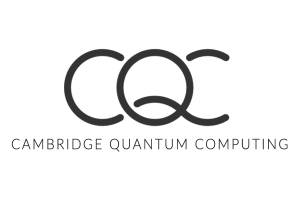
High-performance Q-SDK t|ket⟩ now enables researchers to execute circuits on Amazon Braket and IonQ, develop quantum applications on Windows
Cambridge Quantum Computing (CQC) today announced the latest version of t|ket〉(pronounced “ticket”), its high-performance quantum software development kit (Q-SDK), which now enables quantum circuit execution on Amazon Braket, a fully managed quantum computing service from Amazon Web Services (AWS), and IonQ quantum computers as well as application development on the Windows operating system, according to a news release.
The t|ket〉Q-SDK is designed to maximize the performance of quantum algorithms when executing on quantum computing hardware, and to accelerate the development of quantum computing applications across multiple industry sectors. The latest version extends the number of supported quantum hardware devices while enhancing circuit optimization and noise mitigation.
Originally developed and continuously updated by CQC’s distinguished team of quantum computing scientists, t|ket〉enables researchers, algorithm designers and software developers to build and execute quantum circuits that attain the best results on the most advanced quantum devices available. t|ket〉translates machine-independent algorithms into executable circuits, optimizing the physical qubit layout while reducing the number of required operations.
t|ket〉works across virtually all quantum hardware devices and quantum programming languages and can be easily migrated between devices by changing just a single line of code to connect devices across a developer’s research program. The Q-SDK is used by many quantum hardware providers as well as major companies worldwide.

Following are details on the new features included in the 0.6 version of t|ket〉:
- Extends the number of supported devices, simulators and development frameworks. Quantum researchers and developers can now test their applications on multiple high-performance simulators and, when ready, execute their circuit on quantum devices of choice via Amazon Braket, including IonQ and Rigetti. The latest version of t|ket〉also features direct support for IonQ trapped-ion quantum computers in addition to its existing support for devices from IBM, Honeywell, Rigetti and AQT.
- Enhances circuit optimization and noise mitigation techniques developed from proprietary research, including Cambridge Quantum Computing’s extensive research on ZX Calculus. This feature set allows t|ket〉developers to optimize large circuits for general purpose quantum algorithms.
- Extends operating systems support. Users can now choose to develop quantum applications on their framework of choice — Microsoft Windows, Linux or Apple macOS.
- Improves support for Qiskit, IBM’s open-source framework for quantum computing. Quantum application developers can use high-level quantum libraries which provide cross-domain algorithms upon which domain-specific applications can be built, dramatically reducing development time.
“These enhancements to t|ket〉will enable our Fortune 500 customers and others to tackle problems as diverse as carbon capture, materials science and mathematical optimization across multiple platforms seamlessly,” said CEO Ilyas Khan of Cambridge Quantum Computing. “t|ket〉’s state-of-the-art qubit placement and routing protocol ensures they will achieve valuable results even in the Noisy Intermediate-Scale Quantum (NISQ) era.”
t|ket〉is also used as a fundamental building block for EUMEN, CQC’s quantum computational chemistry platform, and the company’s Quantum Machine Learning framework. Standalone commercial support (via joint development or not) is also available.
A new t|ket〉online manual as well as updated Jupyter Notebook-based tutorials are also now available. The t|ket〉Q-SDK is offered free-of-charge for non-commercial research.
The changelog for this version is available here.
If you found this article to be informative, you can explore more current quantum news here, exclusives, interviews, and podcasts.
















